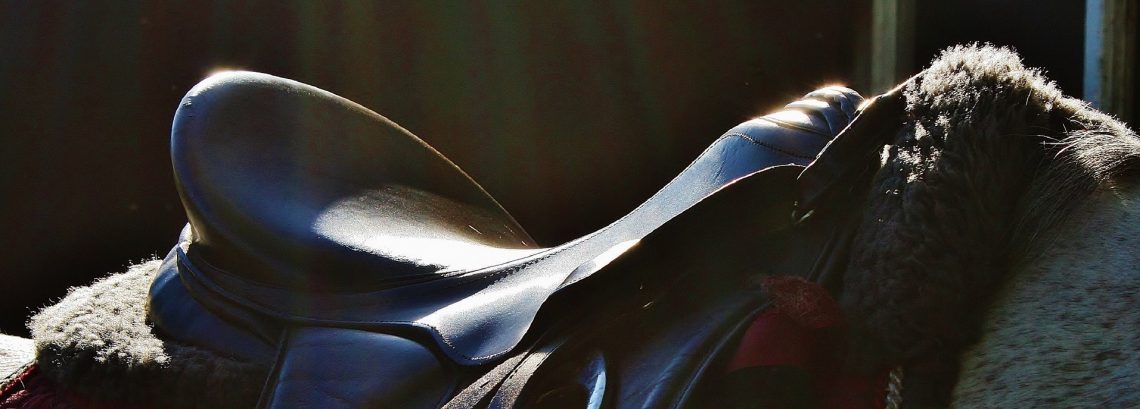How To Choose A Saddle

A correctly fitted saddle is essential for the comfort and safety of you and your horse. Whatever the discipline, whether it’s show jumping, eventing, dressage or just hacking, your horse’s performance and behaviour will be affected by the fit of its saddle. And different disciplines require variations in design to meet the needs of that activity.
If a saddle is causing your horse pain or discomfort, you might notice the horse bucking and napping. It can also affect his health and performance, leading to long-term equine health problems that could either require expensive corrective treatments or may not be able to be fixed at all. A well-fitting saddle provides maximum comfort, reduces the risk of long-term injury or strain, and optimises his performance.
We are often asked about how we measure up for a saddle, so we created this guide to help answer your questions.
What saddle do I need?
There are many different saddles designed for different riding disciplines, so consider what type you need. If you and your horse take part in dressage, a dedicated dressage saddle will be designed to give you a closer feel with your horse, allowing you to give him better signals.
There are saddles for show jumping and endurance riding, as well as general purpose saddles that offer a well-rounded solution.
We offer a professional saddle fitting service with a qualified saddle fitter, who will assess you and your horse, taking into consideration any previous injuries or issues, the horse’s current condition and conformation, riding style or discipline to advise on the perfect saddle solution.
Seeking knowledgeable and unbiased advice from an experienced saddle fitter can be crucial in choosing the perfect saddle for any pairing.
Find out moreWhat size saddle do I need?
It is important to remember that there are two of you using the saddle and so both your measurements are important. The seat size is for you, the rider, and the gullet size, saddle width and tree size are for your horse.
Seat Size
General seat sizes range from 14" up to 19" with 17" and 17.5" being the most common and most popular sizes. To measure, sit in a chair with your knees bent at a 45-degree angle and your feet flat on the ground. Ensure the base of your spine is touching the back of your chair. Take a tape measure and run it along the side of your thigh, measuring from the front of your knee to the back of your buttocks.
If the saddle is too small for you, you may end up sitting on the cantle instead of the deepest part, which will put a lot of pressure on your horse’s back. On the other hand, if the saddle is too large it could go past the last rib and put pressure too far back on the back!
|
YOUR MEASUREMENT |
YOUR SADDLE SIZE |
|
Less than 16.5" |
15" saddle |
|
Between 16.5" and 18.5" |
16" saddle |
|
Between 18.5" and 20" |
16.5" saddle |
|
Between 20" and 21.5" |
17" saddle |
|
Between 21.5" and 23" |
17.5" saddle |
|
More than 23" |
18" saddle |
Gullet
A saddle with the right size gullet for your horse is just as important as your seat size. If it’s too wide the saddle will press down on the withers and if it’s too narrow it will pinch. Gullet sizes generally come in narrow, medium, wide, and extra-wide.
How should the saddle fit my horse?
When you receive your saddle, be sure it fits you and your horse properly. Place the saddle over the wither and let it slide onto the back and into its natural resting place. It shouldn’t be tipping forward or backward, but should sit balanced and level with the weight distributed evenly along the horses back. It should not make any contact with the spine or wither, with an approximate 6cm clearance between the front of the saddle and the top of the horse’s wither. The horse should not be taking any weight on its lumber region, so make sure the back saddle does not sit any further back than the start of the last rib. When riding, the saddle should feel balanced and not move significantly in any direction.
Try our professional saddle fitting service.
We offer a professional saddle fitting service with a qualified saddle fitter, who will assess you and your horse, taking into consideration any previous injuries or issues, the horse’s current condition and conformation, riding style or discipline to advise on the perfect saddle solution.
Seeking knowledgeable and unbiased advice from an experienced saddle fitter can be crucial in choosing the perfect saddle for any pairing.
Find out more
